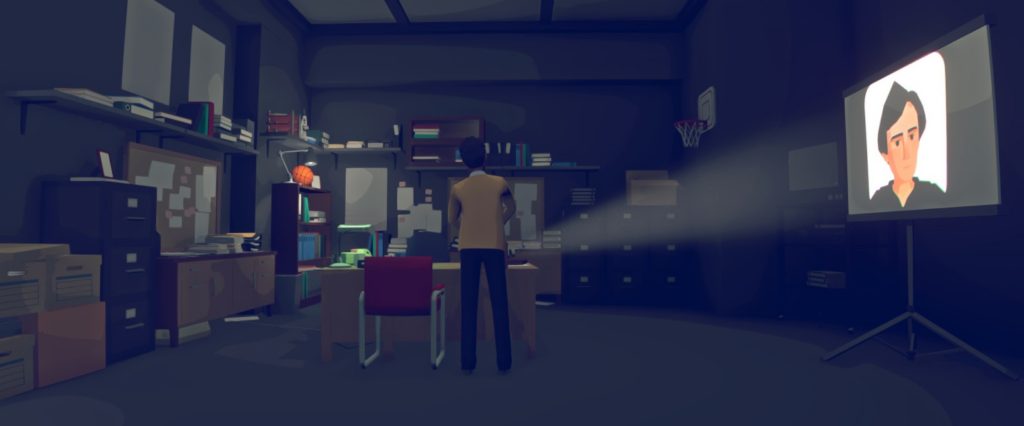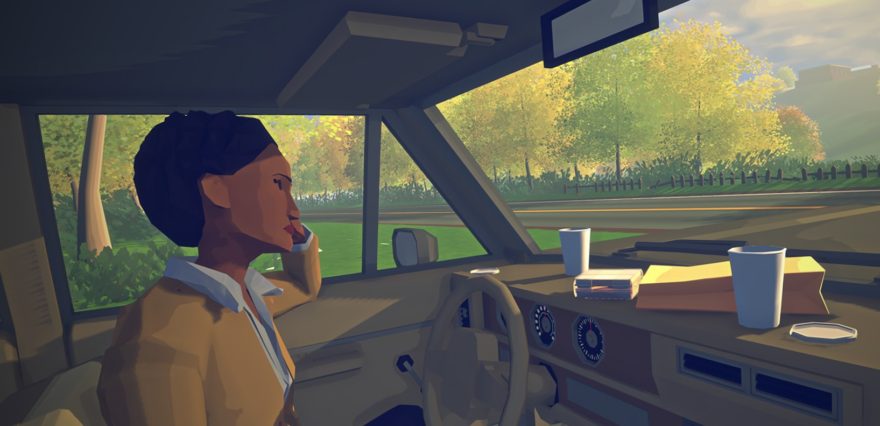Every film studies student is forced to watch an infant in a carriage careen down a staircase to its death. They do this because it’s important. The Odessa Steps sequence in Sergei Eisenstein’s Battleship Potemkin (1925) is a Cinema Studies 101-level text in film editing. As a theorist, Eisenstein, together with contemporary Lev Kuleshov, argued for a cinema built on the revolutionary effect of montage: meaning was created in the edit. In Battleship Potemkin, this meant a shot of a horrorstuck face and that shot of the runaway baby carriage played on the audience’s then-fledgling grasp on cinematic language. Terror was created in the inferences of the cut.
One well-trodden anecdote says that Kuleshov cut together a shot of actor Ivan Mosjoukine’s expressionless face with several different images: a girl laid in a coffin, a bowl of soup, a woman on a sofa. The result was that viewers read a new expression on Mosjoukine’s face each time—as if he were reacting to, and in the same space as, the girl, the soup, the woman.
What was clear to the Soviet theorists was that editing—only introduced to film some 20 years before their writings—was the basis of cinema: it provided control of the image and, when shaped as propaganda, control of the proletariat too. They were Marxists, after all. The propagandistic bent to Soviet montage theory got sanded down as cinema progressed: pre-1960 Hollywood films aimed at a more modest goal than “revolt of the masses,” striving to make the cut invisible and simply achieve continuity across space, time, and narrative.
It’s somewhere on the spectrum between these two schools of thought that most cinema finds itself. And now, Virginia is making a concerted effort to employ cinematic editing in a virtual space. That is the meat of its ambition; so much so that it thanks Brendon Chung’s bite-sized experiment in videogame editing Thirty Flights of Loving (2012) for inspiration in the end credits. Yes, it shrouds itself in easy headline-worthy nostalgia triggers like Twin Peaks, with its setting of a small town with secrets, and The X-Files, from which it cribs two investigators—protagonist Anna Tarver and her partner Maria Halperin—on the trail of the paranormal. But these superficial references are the least interesting aspect of Virginia. In fact, it utterly fails to deliver on the promise of an engrossing mystery built on those familiar parts.

First and foremost, Virginia is fully dialogue-free. No one says a word. This places a huge burden on the game’s stylized art, which pairs minimalist detail with vivid, impressionistic daubs of color, to communicate emotion. Unfortunately, the characters’ Mii-style eyes, eerily bony hands, and limited animation are too animatronic to carry a visual narrative—their mute miming is closer to Lego Twin Peaks than, say, the beatific suffering written on Maria Falconetti’s face in the seminal silent film The Passion of Joan of Arc (1928). OK—one of the most vivid performances in film history is maybe an unfair standard to hold anything to. Still, you can tell a story with still images if you cut them together well.
Sadly, in attempting to transpose cinematic language to videogames—its most ambitious move—Virginia falls flat. Its lack of dialogue and pantomime animation aren’t far from the exaggerated emoting of actors in silent films; they certainly aren’t fatal flaws. But the game dives into an irreparable gulf between the way a film camera unrelentingly directs your gaze and the way a first-person videogame camera yields to player control, and all its mistakes begin to snowball from there.
When, for example, Tarver and two other officers knock at a suspect’s door, the scene doesn’t progress until you press X. You’re all stood there on the stoop, but until you give the narrative go-ahead nothing happens. The same thing happens when the FBI director tosses Tarver a file; when Tarver takes her badge at graduation; when Tarver’s offered a cup of coffee. All these scenes will come to a halt if you don’t tap the button when the game prompts you.
In these moments, I imagined Dale Cooper monologuing into his trusty tape recorder:
Diane, it’s 9:30 am. I haven’t moved for 20 minutes, and the director is still smiling at me. Do you think he wonders why I’m not taking the badge? I know I would, Diane.
A generous player might say that the game is letting you play editor here; choosing when to cut to the next shot, offering you interactivity on a narrative level rather than a mechanical one. And it would be churlish to challenge the game’s prompting at every turn—eventually, you and the game will fall into a begrudging compromise. That said, you’re never dictating the rhythm of the story so much as pressing the play button on a temporal VCR machine.
Game logic dictates that you should scour environments for clues and extras and side quests. But there is no reason, not one, that the player needs to be afforded control in any of Virginia’s scenes—except as a sop to interactivity in a game that otherwise evinces no interest in player control whatsoever. It creates the impression that you’re a shitty actor forgetting your lines as the cast waits, their eyes popping out of their heads, for the show to go on. Plenty of games make you walk down a hallway to get from cutscene to cutscene; Virginia isn’t alone there. But it tells its story by shoving you into the single open door in that hallway and sitting you in the single usable chair in the room; all the fiddling in between adds nothing.

The clarity of meaning that can arise from a well-timed cut is almost entirely lost on the roving camera of a first-person videogame: Chung’s Thirty Flights of Loving works because it’s a short story that flits back and forth in time to fill in gaps, not a decades-long sci-fi mystery. There are moments when the game fixes your view and cuts to a new scene that do work. They work because you’re being shown two specific things. By and large, though, Virginia refuses to commit to cinematic language and force you to look. Instead, it appropriates the trappings of A Movie—complete with a letterboxed image and barrel distortion from a virtual camera lens, and a rich-then-insistent-then-overbearing orchestral score—while diluting the potential power of its aesthetic.
Virginia eventually reconciles this tension between player control and visual language as it goes on by simply removing the bits where you can fiddle with the camera. The last third is an exhausting, nonstop montage—a seemingly endless procession of dreams-within-dreams, flashbacks, and time jumps, like drifting through a season of bad TV while in the grip of a life-threatening fever. It’s here that the game’s dirty secret is revealed: even if Virginia were a three-hour movie rendered in-engine, it wouldn’t be a very good one. Once the game begins to propel through its plot at lightspeed you realize—freed of the burden of pressing X every so often—that the story is pretty silly, and its dialogue-free, awkwardly edited delivery mechanism even sillier.
It’s a hodgepodge of references to the work of David Lynch—the Fire Walk With Me typeface for intertitles, the bassline from “Twin Peaks Theme” under a distinctly Bang Bang Bar-esque scene, animals popping up where you’d least expect—combined with a bunch of daft secret rituals and UFO visitations. There are admirable attempts here at dealing with sexism, racial prejudice, and even gaslighting, but without dialogue and without a consistent visual language they slip between the cracks. The mute cast of characters is reduced to tokens—a broken key, a tube of lipstick, a cigarette, a changed surname—that recur without accruing any new meaning.

Let me ask you: if you’ve seen it, what do you remember about the first episode of Twin Peaks? I remember three things: One, the bizarre cadence of Jack Nance delivering “She’s dead—wrapped in plastic.” Two, Grace Zabriskie’s gut-wrenching scream when Sarah Palmer learns of her daughter’s death. And three, a single cut; one shot held just a moment too long on Zabriskie’s face, twisting in horror, and then a reverse shot, of Killer Bob crouching behind Laura Palmer’s bed.
Virginia doesn’t have moments like this. It can’t, because the characters don’t make a peep. Lord knows videogame characters could stand to be quieter, but Virginia can’t convey the necessary emotional depth to make its story stick. The ideas at play piqued my interest pre-release: two women of color as its leads, the promise of a new spin on enduring cop show tropes, surrealist touches. But Virginia is selling points all over, a mood board of ideas—some cool, some musty—that take the player’s interest as self-evident. Anyone who’s seen a movie before should probably just watch another.
For more about Kill Screen’s ratings system and review policy, click here.
